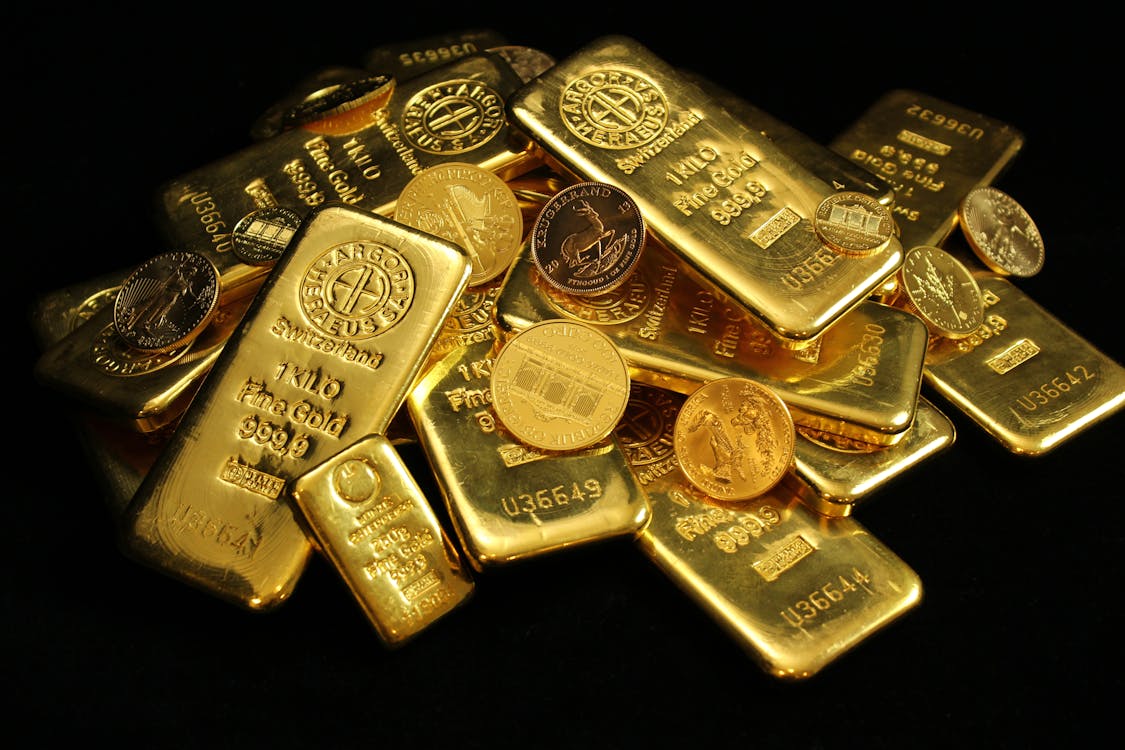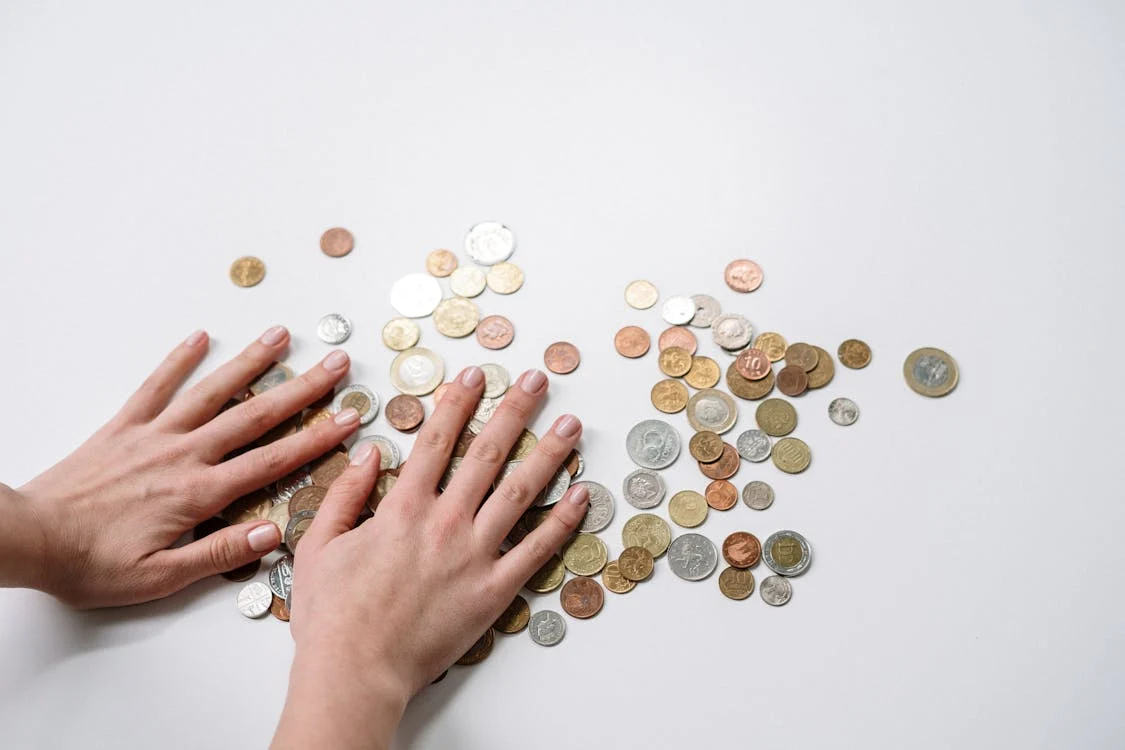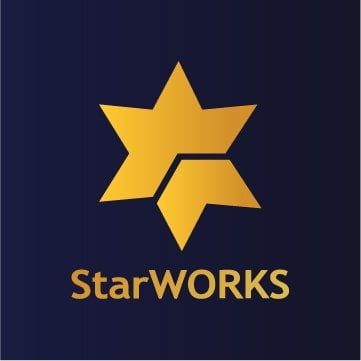Illustration of Gold Tokens, photo by Cottonbro studio on Pexels
In recent years, the convergence of traditional assets and blockchain technology has unlocked new possibilities for investors seeking security, transparency, and accessibility. Among the most promising innovations is the tokenization of gold, where digital tokens represent ownership of physical gold, offering an entirely new way to trade and invest in this timeless asset.
Tokenized gold provides a unique blend of stability from gold’s historic value and the efficiency of blockchain, making it an attractive option for both retail and institutional investors. As global demand for digital assets continues to rise, the concept of tokenized gold is poised to revolutionize how we perceive and manage wealth. So, without further ado, let’s dive into our discussion.
What Are Tokenized Gold Tokens?
Tokenized gold is the representation of physical gold on a blockchain or digital ledger, where each token corresponds to a specific amount of gold. This concept merges the stability and historical value of gold with the technological advantages of blockchain, such as transparency, decentralization, and security. Essentially, tokenized gold allows investors to hold and trade fractional shares of physical gold, much like a cryptocurrency, without the need to store or manage physical gold themselves.
Background of Gold Being Tokenized

Illustration of Gold, photo by Michael Steinberg on Pexels
Gold has been a universally accepted store of value for millennia, acting as a hedge against inflation, currency fluctuations, and economic instability. However, investing in physical gold has its limitations, including storage costs, transportation difficulties, and liquidity challenges. These barriers led to financial products like gold ETFs (Exchange-Traded Funds) and gold futures, which offer investors exposure to gold without the need to own it physically.
Tokenization represents the next evolution of gold investing. Using blockchain technology, tokenized gold transforms physical gold into a more liquid, divisible, and accessible asset. Blockchain ensures the secure and transparent transfer of ownership while eliminating the need for intermediaries like brokers or custodians. Investors can now acquire fractional shares of gold, making it accessible to retail and institutional investors alike, without the complications of storing or trading physical gold.
Step-by-Step of How Gold Tokenization Works
- Sourcing and Storing Physical Gold: The process begins with sourcing physical gold from trusted suppliers. Typically, this gold is stored in secure vaults, often managed by regulated entities or financial institutions.
- Issuing Digital Tokens: The physical gold stored in vaults is then tokenized, meaning each token issued on a blockchain corresponds to a specific amount of gold. The backing ratio is usually 1:1, ensuring that a physical asset fully backs each token.
- Smart Contracts and Blockchain Integration: Smart contracts, the self-executing protocols built on blockchain, ensure that the tokenized gold behaves according to predetermined rules. These contracts control the issuance, transfer, and redemption of the tokens. The use of blockchain guarantees that all transactions are transparent, traceable, and secure.
- Ownership and Trading: Token holders can trade or transfer ownership through a decentralized ledger without needing a third-party intermediary. These tokens can be traded across exchanges, providing liquidity and ease of access for retail and institutional investors alike.
- Redemption: Some gold token platforms allow token holders to redeem their digital tokens for physical gold, though conditions like minimum redemption amounts and geographical restrictions might apply.
Benefits of Gold Tokenization
Tokenizing gold offers several key advantages over traditional methods of gold investment:
- Increased Accessibility: Tokenized gold lowers the barrier to entry for investors by allowing fractional ownership. Investors can purchase small amounts of tokenized gold rather than buying entire gold bars or coins, making it easier for individuals with limited capital to invest in gold.
- Enhanced Liquidity: Gold tokens can be easily bought, sold, or traded on decentralized exchanges, providing higher liquidity than traditional gold investments. Investors don’t need to go through cumbersome processes to sell physical gold, as tokens can be traded in real-time on digital platforms.
- Transparency and Security: The blockchain’s transparent nature ensures all transactions are publicly recorded and immutable. Investors can trust that each token is backed by a corresponding amount of physical gold stored securely in a vault.
- Reduced Costs: Since blockchain technology eliminates intermediaries, the costs associated with gold storage, insurance, and transfer fees are significantly reduced.
- Programmability: Tokenized gold can be programmed through smart contracts to enable various financial operations, such as collateralizing loans, creating derivatives, or powering decentralized financial systems (DeFi).
- Global Reach: Blockchain’s decentralized nature makes tokenized gold accessible globally, breaking down geographical barriers and opening up opportunities for cross-border investments.
Real-World Examples and Case Studies of Gold Tokenization

Illustration of Gold Tokenization, photo by Zlataky on Pexels
Several platforms have emerged that offer tokenized gold solutions with different approaches to managing and trading gold tokens. Notable examples include:
- Paxos Gold (PAXG): Paxos offers tokens fully backed by physical gold, with each token representing one fine troy ounce of gold. It is traded on major exchanges and can be redeemed for physical gold or equivalent cash value. Paxos ensures that its gold reserves are stored in secure, insured vaults.
- Tether Gold (XAUT): Tether Gold is another example of a tokenized gold product that allows investors to hold digital tokens fully backed by physical gold reserves stored in Switzerland. Similar to Paxos, Tether Gold offers redeemability for physical gold or fiat currency.
- DigixDAO (DGX): DigixDAO is one of the pioneers of tokenized gold on the Ethereum blockchain. Each DGX token represents 1 gram of gold stored in vaults in Singapore. Digix enables transparent audits of its reserves, providing investors with confidence in the token’s backing.
HSBC Pilots Quantum-Safe Technology for Tokenized Gold
On 19th September 2024, HSBC announced its successful trial of quantum-secure technology for buying and selling tokenized physical gold. This achievement is significant because it addresses potential future threats posed by quantum computing, which could undermine traditional cryptography.
In 2023, HSBC was the first global bank to offer tokenized physical gold to institutional investors using distributed ledger technology (DLT). Following its initial success, HSBC launched the HSBC Gold Token for retail investors in Hong Kong, allowing them to acquire fractional ownership of physical gold. These developments occurred through the HSBC Orion digital assets platform.
The recent quantum-secure trial represents a leap forward in protecting critical financial applications from future quantum computing threats. HSBC also tested the interoperability of its gold tokens using post-quantum cryptography (PQC) to move digital assets safely across distributed ledgers. This solution also enables the conversion of HSBC’s gold tokens into ERC-20 fungible tokens, which enhances distribution and compatibility with other digital wallets and blockchain networks.
Post-Quantum Cryptography (PQC) Explanation
Post-Quantum Cryptography (PQC) refers to cryptographic algorithms designed to be secure against the computational power of quantum computers, which are expected to render traditional encryption methods vulnerable. Current cryptographic systems, such as RSA and ECC (Elliptic Curve Cryptography), rely on the difficulty of problems like factoring large integers or solving discrete logarithms—problems that classical computers find extremely challenging. However, using algorithms like Shor’s Algorithm, quantum computers could solve these problems exponentially faster, potentially breaking encryption widely used in internet security, financial systems, and blockchain networks.
PQC aims to preemptively defend against this threat by developing new cryptographic algorithms that are resistant to quantum attacks. Unlike traditional encryption, PQC does not rely on the difficulty of factoring or logarithms but instead utilizes more complex mathematical constructs like lattice-based cryptography, multivariate polynomial equations, and hash-based schemes. These methods are believed to be far more secure, even in the face of powerful quantum computers, which could exponentially accelerate problem-solving capabilities.
Adopting PQC is crucial for systems like blockchain, banking, and digital communications, where long-term security is essential. Implementing PQC into blockchain networks, for example, ensures that tokenized assets—such as tokenized gold—remain secure against future quantum threats. Financial institutions like HSBC are pioneering the integration of PQC into their tokenization processes, testing its ability to safeguard transactions across distributed ledgers. By incorporating PQC, they address current and future security concerns, ensuring that financial assets remain protected from potential decryption or manipulation risks as quantum computing evolves.
Conclusion
Tokenized gold represents a monumental shift in how we think about gold as an asset. By combining the stability and historical value of gold with the speed, efficiency, and programmability of blockchain, tokenized gold offers a more flexible and accessible form of investment. The use of blockchain technology in tokenization will continue to evolve, providing investors with more secure, transparent, and efficient ways to own and trade gold in the future.




